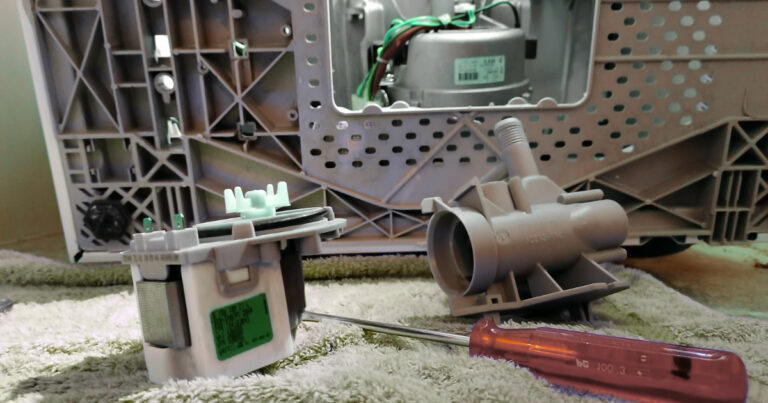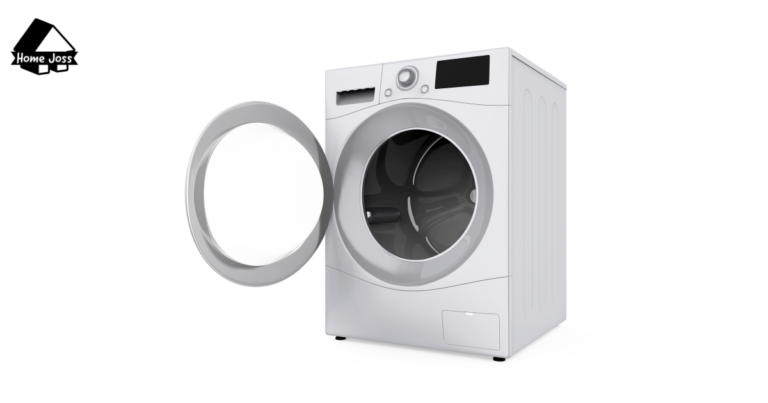Laying a washing machine on its side is not recommended as it can cause damage to the inner and outer tubs, support pads, and suspension system. It is best to transport the washing machine in an upright position to avoid any potential issues.
However, if it is absolutely necessary to lay the washing machine on its side, precautions should be taken to ensure the machine is secured and protected during transportation.

Risks And Consequences Of Laying A Washing Machine On Its Side
When it comes to laying a washing machine on its side, there are potential risks and consequences to consider. Laying a washer on its side can cause the inner and outer tubs to bump against each other, resulting in the loosening of support pads or damage to the suspension.
This can affect the functioning of the washing machine and cause misalignment of the tubs. It is important to note that laying a washing machine on its side is not recommended as it can alter the way your unit works and potentially cause damage. To ensure the safe transport of your washing machine, it is best to keep it in an upright position and secure it properly during transportation
Transportation Tips For Washing Machines
When it comes to transporting a washing machine, it is important to follow some tips to ensure its safety and proper functioning. One of the main concerns is the recommended upright position for transportation.
To prevent potential damage, it is crucial to always maintain an upright position for the washing machine. When the washer is laid on its side, the inner and outer tubs may collide, causing support pads to loosen or suspension to be damaged.
Securing the washing machine in a vehicle is another crucial step. It is advised to load the washer upright into the vehicle and secure it properly to prevent any movement during transportation. This can be done by using straps or ropes to tie the washing machine securely to the vehicle.
Using a dolly can make the transportation process easier. A dolly helps in maneuvering the washing machine and reduces the risk of dropping or damaging it. Make sure to choose a dolly that is suitable for the size and weight of the washing machine.
Exceptions For Spacemaker Unitized Washer/Dryer Models
It is not recommended to lay a washer or dryer on its side or back during transportation. However, there are exceptions for Spacemaker Unitized washer/dryer models. These models should only be transported or moved in an upright position.
Specific guidelines for the transportation or moving of these models can be found in the dryer’s moving instructions provided by GE Kitchen Appliances.
Laying a washer or dryer on its side can cause the inner and outer tubs to bump against each other, potentially loosening support pads or damaging the suspension. It can also cause the tubs to move out of alignment, affecting the unit’s functionality.
Therefore, it is generally best to keep washing machines in an upright position when moving them to avoid any potential damage.
Frequently Asked Questions For Can You Lay A Washing Machine On Its Side?
Can You Lay A Washer And Dryer On Its Side To Transport?
It is not recommended to lay a washer and dryer on their side during transport, except for Spacemaker Unitized models.
How Do You Transport A Washing Machine?
To transport a washing machine, load it upright into a vehicle and secure it properly. Avoid laying the machine on its side or back to prevent damage.
How Do You Move A Washing Machine By Yourself?
To move a washing machine by yourself: 1. Load the washer upright into a vehicle and secure it. 2. Avoid laying the washer on its side to prevent damage to the suspension system. 3. If necessary, use washing machine transit bolts or additional support to transport it safely.
Should The Washer Be On the Left Side?
It is not recommended to lay a washer on its side as it can cause damage to the inner and outer tubs and affect the suspension system.
Can You Transport A Washing Machine On Its Side?
No, it is not recommended to transport a washing machine on its side as it can damage the inner and outer tubs, support pads, and suspension.
How Should You Transport A Washing Machine?
To transport a washing machine, load it upright into a vehicle and secure it properly to avoid any damage during transportation.
Should The Washer Be On The Left Side When Installing?
Traditionally, washers are installed with the washer on the left and the dryer on the right. The lid hinge is usually on the left for front-loaders.
Can You Lay A Washer On Its Side When Moving?
It is not advisable to lay a washer on its side when moving as it can cause damage to the suspension system and alter the way the unit works.
Are There Any Exceptions For Laying A Washer On Its Side During Transport?
Spacemaker-unitized washer/dryer models should only be transported in an upright position. Do not lay these models on their side or back.
What Can Happen If You Lay A Washer On Its Side?
Laying a washer on its side can cause the inner and outer tubs to bump against each other, potentially loosening support pads and damaging the suspension.
It is not recommended to lay a washing machine on its side during transportation. Doing so can cause the inner and outer tubs to bump against each other, potentially damaging the suspension or support pads. This can also lead to misalignment and affect the functionality of the machine.
However, if it is absolutely necessary to transport the washing machine on its side, it should be done with utmost caution. It is advised to install washing machine transit bolts or add additional support to ensure the safety of the machine.
Remember to secure the washing machine upright in a vehicle to prevent any further damage during transportation. Taking these precautions will help protect your washing machine and ensure it continues to operate optimally.






